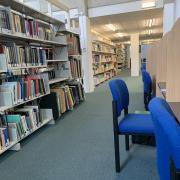
What is communication? Why is it important? How can we improve our communication?
Communication is defined in the Oxford dictionary as 'the activity or process of expressing ideas and feelings or of giving people information.'
But is the only way to communicate through speaking and the use of our voices? No - is the short answer.
The way we interact with other people when using facial expressions, gestures, eye contact and touch all contribute to display our emotions and the relationship with the other person is.
There are 4 main types of communication: verbal, non-verbal, written and visualisations.
Verbal communication is through speaking, non-verbal through body language and gestures; written through the use of text messages or letters and finally visualisations which is through the medium of graphs and mindmaps.
Often, when we are angry we may clench our fists, raise our voice and feel fury inside. Or perhaps communication of affection with family and friends, such as using gestures such as hugs and speaking in a gentle, quiet voice ca all help us deduce the mood of the person we are talking to.
When do we start communicating?
Scientific studies have proven that even when the baby is in the womb is when they begin to communicate Proceedings of the National Academy of Sciences (PNAS). At 28 weeks gestation, babies were able to differentiate between 'ga' and 'ba' sounds, in addition to distinguishing between male and female voices.
Furthermore, newborn babies can make and hear all the sounds in all the languages in the world up to 6 months, however select the relevant sounds or phonemes which are most commonly heard from the people surrounding them. In English, there are 44 phonemes - there are 150 sounds in about 6,500 languages. Up to the age of 7 years, a period also known as the 'window of opportunity' allows children to understand and familiarise themselves to more than one language and is the best time to acquire new languages. After this period, there is a steep decline into adulthood. Patricia Kuhl, the Professor of Speech and Hearing Sciences, conducted a study whereby native Mandarin Chinese speakers spoke Chinese to 9-month-old American babies for 12 sessions over 4 weeks with each session lasting 25 minutes. The results concluded that the American babies responded to Mandarin sounds at the same level as native Chinese babies hearing the language their whole lives. But why? Kuhl arranged a baby with an electrode cap in which several experiments were carried out which showed that connections and electrical pathways were being formed within the brain for each language.
Where is communication important?
Wherever you are - home, school, work - communication plays a key role of interaction with others. Communication forms the basis of relationships and other key qualities, such as teamwork and listening skills, crucial for every situation. It can help us bond with other people, in addition to animals.
An effective communicator uses a variety of verbal and non-verbal communication, catering their style dependent on the audience, such as using a high-pitched sound when talking to babies and perhaps slowing our speaking speed when talking to the elderly. Another underappreciated aspect is providing feedback to the person you are speaking to prevent any misunderstandings by repeating phrases they've mentioned.
Over lockdown, a group of students at JAGS learnt British Sign Language. Isabel Meldrum was particularly impressed as in a recent interview, she mentions, 'Sign language is a universal, vital life skill and through undergoing this course, the competences I have learnt I can apply to certain situations, particularly when volunteering at my local hospital.'



























